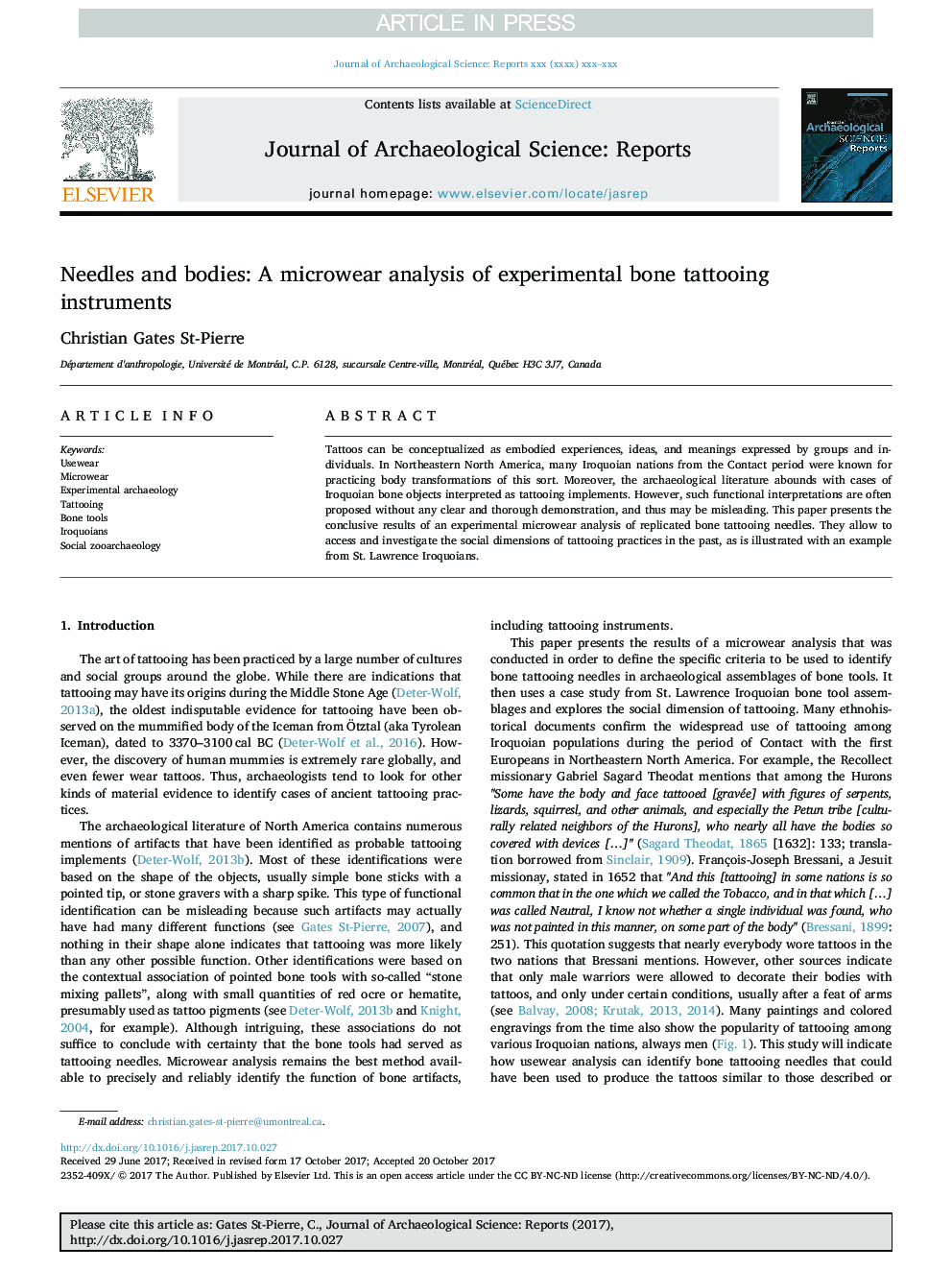| Article ID | Journal | Published Year | Pages | File Type |
|---|---|---|---|---|
| 11005199 | Journal of Archaeological Science: Reports | 2018 | 7 Pages |
Abstract
Tattoos can be conceptualized as embodied experiences, ideas, and meanings expressed by groups and individuals. In Northeastern North America, many Iroquoian nations from the Contact period were known for practicing body transformations of this sort. Moreover, the archaeological literature abounds with cases of Iroquoian bone objects interpreted as tattooing implements. However, such functional interpretations are often proposed without any clear and thorough demonstration, and thus may be misleading. This paper presents the conclusive results of an experimental microwear analysis of replicated bone tattooing needles. They allow to access and investigate the social dimensions of tattooing practices in the past, as is illustrated with an example from St. Lawrence Iroquoians.
Related Topics
Social Sciences and Humanities
Arts and Humanities
History
Authors
Christian Gates St-Pierre,
